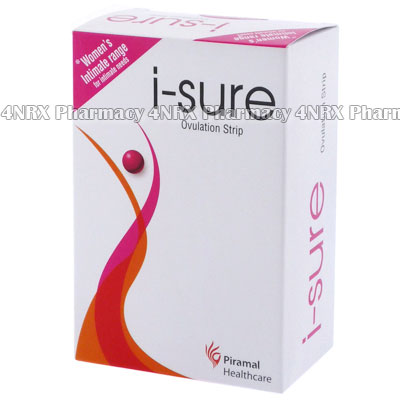 |
Home  Womens Health Womens Health  i-sure Ovulation Strip i-sure Ovulation Strip |
|
|||||||||
|
i-sure Ovulation Strip
What is i-Sure Ovulation Strip used for? i-Sure Ovulation Strip is a test used to determine the most fertile time in a woman's ovulation cycle to attempt conception. The strip operates by measuring levels of certain hormones in the urine to signal the best time to begin attempting to conceive. The strips are meant to be used for several days until the desired results occur. How should I use i-Sure Ovulation Strip? The frequency of use for i-Sure Ovulation Strip will be based on your menstrual cycle and is determined by using the chart included with the strips. When using the strip, put four to five drops of urine onto the strip. Wait three to five minutes to allow time for the results to appear. If the line that is designated T is dark as or darker than the one marked C, the test is positive and the chances of conception are highest. If the line T is lighter than C the result is negative and the test should be repeated the next day. After a positive result, intercourse is advised on the same day of the test and the following three days. To get the most accurate results, it is suggested to take the test at noon each day as the hormones tested by the strip are produced in the morning. What are the side effects of i-Sure Ovulation Strip? i-Sure Ovulation Strip will have no side effects on the user. Please Note Reduce your fluid intake prior to using i-Sure Ovulation Strip to get more accurate results from the test. It is also recommended to use the strips at the same time each day. Strictly follow all instructions provided to you by your physician or pharmacist while using i-Sure Ovulation Strip. Optimum and safe dosage can differ based on the patient and the condition being treated. As this medication may be unsafe for certain patients, it is essential you always inform your physician if you are pregnant or breastfeeding, as well as if you have any allergies, other illnesses, or ongoing health conditions, and if you are taking any other form of medication, supplements, or herbal products. Immediately seek emergency medical care if you have an allergic or hypersensitive reaction. Common signs of a reaction include hives, swelling, skin rashes, chest pains, as well as trouble breathing or swallowing. 
|
|||||||||||||||||